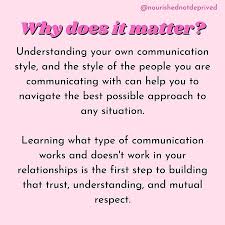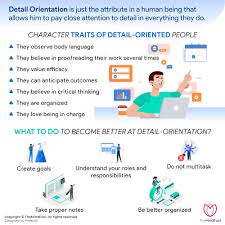When it comes to raising kids, there’s one ingredient that can make or break the recipe: communication. Whether you’re a parent or a nanny, how you talk, listen, and share information shapes not only your working relationship but also the environment the child grows up in.
But here’s the twist — communication isn’t one-size-fits-all. Some people are straight-to-the-point texters, others love long phone calls, and some rely on visual reminders or checklists. Knowing your style (and the style of the person you’re working with) can make life smoother, conflicts fewer, and the child’s care more consistent.
So, grab your mental highlighter — let’s explore the most common communication styles in the parent-nanny world, how to identify yours, and how to blend styles for a better partnership.
________________________________________________________________________________________________________________________________________
Why Communication Styles Matter
Imagine this: a nanny who thrives on daily text updates works for a parent who prefers one weekly email recap. Without realizing it, both start feeling frustrated. The nanny wonders if the parent is engaged; the parent feels bombarded. No one’s wrong — but their styles clash.
Understanding your communication style helps:
- Reduce misunderstandings and assumptions
- Build trust and confidence
- Create a more supportive environment for the child
- Make problem-solving faster and smoother
Think of it as learning each other’s “language.”
________________________________________________________________________________________________________________________________________
The 4 Big Communication Styles
While everyone’s a blend, most of us lean toward one of these four. As you read them, think: “Is this me?”
________________________________________________________
1. The Detail-Oriented Communicator
This person likes facts, specifics, and thorough explanations. They want to know exactly how the nap went, what the child ate, and what time the spelling homework was finished.
- For Parents: You might send daily checklists, notes in a binder, or detailed texts about routines.
- For Nannies: You might write comprehensive shift notes or ask clarifying questions to avoid mistakes.
How to work with them: Give clear updates and confirm instructions. Summaries with bullet points go a long way.
________________________________________________________
2. The Big-Picture Communicator
This style focuses on goals rather than details. They’re more about the “why” than the “how.”
- For Parents: You might say, “I just want my child to have a fun, enriching day” rather than outlining a step-by-step plan.
- For Nannies: You might adapt on the fly and focus on the child’s mood rather than sticking to an exact schedule.
How to work with them: Keep updates concise but explain the reasoning behind your choices. Periodic check-ins instead of constant texts usually work best.
________________________________________________________
3. The Warm & Personal Communicator
This person thrives on emotional connection. They like face-to-face chats, voice notes, or even a quick call to touch base.
- For Parents: You might want to know how your child felt about the day, not just what they did.
- For Nannies: You might prefer sharing wins and challenges in conversation rather than on paper.
How to work with them: Make time for a brief verbal check-in at the start or end of the shift. Add a little personal note (“She was so proud of her drawing today!”) to updates.
________________________________________________________
4. The Efficient Communicator
Short, sweet, and to the point. These people want updates only when something’s urgent or different from the usual routine.
- For Parents: You might prefer, “Everything was fine today,” over a three-paragraph breakdown.
- For Nannies: You might send quick texts only when there’s a change or question.
How to work with them: Respect their time. Use concise messages and highlight only what’s new or needs attention.
________________________________________________________________________________________________________________________________________
Interactive Moment: Find Your Style
Take a minute and jot down (or mentally note):
- Do you prefer written or verbal updates?
- Do you like detail or big-picture overviews?
- Do you want updates frequently or just when needed?
Then think about the person you’re working with. How do they seem to prefer updates? Where do your styles overlap? Where do they differ?
This mini self-assessment helps both sides adjust expectations and meet in the middle.
Try finding your own communication style: https://brainfall.com/quizzes/communication-style-quiz-whats-your-communication-style/
________________________________________________________________________________________________________________________________________
Bridging the Gap Between Styles
Even if you and your nanny/parent have different styles, you’re not doomed! Here are quick strategies to make communication work:
- Create a Shared System: Use a daily logbook, app, or WhatsApp chat for updates.
- Set Clear Expectations Upfront: Agree on how often and in what format updates should happen.
- Use a Mix: Combine written notes for details and quick calls for emotional highlights.
- Check In Regularly: Every month or quarter, revisit your communication routine — what’s working, what’s not.
________________________________________________________________________________________________________________________________________
Practical Tools to Try
Here are some tools both parents and nannies can experiment with:
- Apps like Daily Nanny or Brightwheel: For logging naps, meals, and milestones.
- Shared Google Docs/Sheets: Great for schedules, allergies, or emergency contacts.
- Photo/Video Updates: Send a quick picture instead of a long text when appropriate.
- Voice Notes: Perfect for busy hands when typing isn’t possible.
________________________________________________________________________________________________________________________________________
Why This Matters for Kids
At the end of the day, your communication style isn’t just about convenience — it directly impacts the child. When parents and nannies are aligned:
- Kids get consistent routines and messages.
- There’s less stress or confusion about rules.
- Everyone feels like part of the same “team” caring for the child.
Children thrive when the adults in their lives are on the same page.
________________________________________________________________________________________________________________________________________
Try This Together
Before your next shift or at pick-up time, ask each other:
“How do you like to receive updates? What’s easiest for you?”
This simple question can open the door to a smoother, happier working relationship.
________________________________________________________________________________________________________________________________________
The Takeaway
There’s no “right” communication style — only what’s right for you and your team. By understanding your own style, respecting others’ styles, and creating shared systems, you’ll build stronger trust, avoid misunderstandings, and — most importantly — create a nurturing environment where kids can flourish.
So… what’s your style?













